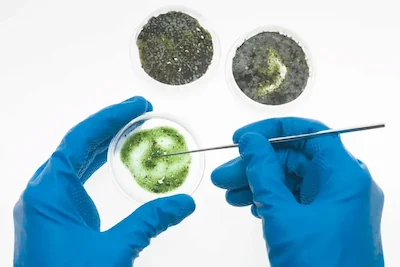AIR TESTING: MOLD AND BACTERIA

Mold spores are a frequent and ever-present organism that enters every aspect of our everyday life. However, when mold levels become elevated indoors, those occupying the space are at a heightened risk for various health complications. This highlights the crucial role of conducting air testing as part of thorough assessments.
What is Air Testing for Mold and Bacteria?
Identifying indoor air quality includes air testing for mold and bacteria. It involves systematic collection and analysis of air samples to determine the presence of mold and bacteria within an indoor environment. The testing process has a variety of purposes:
Health and Happiness:
To ensure that you are breathing pure air; air testing ensures that it is free from extremely dangerous mold and bacteria that can cause sickness.
Environmental Concerns:
Air testing is more important because some mold and bacteria can affect it.
Safety:
The safety and well-being of the indoor dwellers (people inside) depends on detecting the hazardous microorganisms in the air.
Compliance:
Air testing for regulatory compliance is important since many businesses are subject to indoor air quality regulations and standards.
One usually conducts a visual inspection to determine whether the indoor environment has high mold levels and thus requires remediation. You carry out sampling to obtain samples for the laboratory. In the non-viable analysis, the technicians use microscopic examination to visually spot and count the spores.
Air Sampling:
In air testing air pumps collect air samples by pulling a known volume of air through a collection device. The spores settle on the device which traps them for counting under a microscope. Mold spores are tiny and can spread easily through the air. Air sampling always includes sampling from the inside and the outside. The building should not have mold that is absent outside, and there should not be higher concentrations of mold inside the building compared to outside. Mold spores in the air vary with the cycle of the mold, atmospheric conditions and ventilation.
Specifically, spore counts for each spore category and total spore count per cubic meter are in air sample reports.
Tape Sampling:
Researchers use pre-coated slides called “bio-tapes” to create samples by merely pressing them up to a moldy surface. It is a non-invasive procedure that will not harm materials or surfaces if done correctly.
Swab Sampling:
Take a swab sample where one can see visible mold or moisture stains. A swab moistened with a preservative collects a sample of the mold and then sends it to the laboratory for testing.
Carpet Sampling:
The sampling is designed to look for molds that the coverup missed or that were cleaned up. Mold is likely to have occurred in a building before and thus a carpet is likely to have a previous history. You may be able to tell whether there is a mold issue if the carpet has not been freshly cleaned. An air pump and a carpet-sampling cartridge vacuum a small area of the carpet to conduct sampling.
Bulk Sampling:
The lab may identify spores in small pieces of drywall, carpet, or any other porous material. Semi-quantitative information on Tape Lifts, Swabs, Carpet, and Bulk Samples.
The following tests are performed for Air Testing :
| GROUP | MATERIALS TESTED | PARAMETERS TESTED | TECHNIQUES USED |
|---|---|---|---|
| BIOLOGICALENVIRONMENT AND POLLUTION | Air/surface (Air Sampling) | Total Plate Count | CVR/MB/SOP/17 |
| BIOLOGICALENVIRONMENT AND POLLUTION | Air/surface (Air Sampling) | Yeast and Moulds | CVR/MB/SOP/17 |
The best choice for mold and bacteria air testing is CVR Labs, given our modern equipment, specialized tools, and highly qualified personnel. CONTACT US today for more details regarding our services as well as the best ways to ensure clean indoor air and regulatory compliance.
